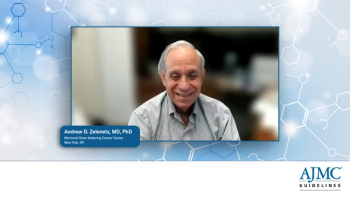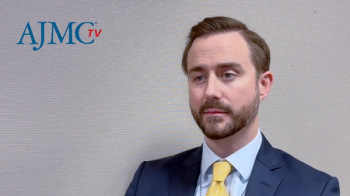
Payer Policy and Provider Choice in Wet AMD
Peter L. Salgo, MD: How does that conversation go? What happens when there’s a difference between a physician’s clinical judgment and price, and price is getting pushed back at you through the phone? Describe the whole process for me.
Charles Wykoff, MD, PhD: Certainly, many patients can do well on bevacizumab dosing. In my hands, they often need more frequent dosing, But, in patients that are incomplete responders and have persistent fluid that is causing lack of optimal visual acuity outcomes, I don’t hesitate to switch those patients over to on-label drugs.
Peter L. Salgo, MD: And do you get pushback when you do that? Do you get phone calls?
Charles Wykoff, MD, PhD: Yes. Internally, we actually have some plans where we, as a group, are really very resistant to using an on-label drug, because we’ve been told very clearly by the payers, “At all costs, please avoid using on-label drugs.” We try to respect that because, as you said, someone else is paying their bill. So, we feel like we do need to have some conversation with our payers, and we try to stay engaged with them.
Jared Nielsen, MD: But sometimes the hurdles are a little unreasonable, certainly. In some cases, we’ve had a plan come into our state that required visual field testing, which is not a part of monitoring wet AMD or document of improvement. As Charlie mentioned, just keeping things even-keeled and keeping the ship sailing down its current path is a win in this case. When you get hurdles that are placed in front of you like that—to even maintain treatment, much less switch—it’s a challenge to try and take care of those patients.
Peter L. Salgo, MD: Let me drive this a little harder. Are you saying there are plans that when you call up and say, “Mr. Jones is getting much worse and he really needs to switch over to 1 of these 2 drugs that are on-label,” they will push back and say no?
Charles Wykoff, MD, PhD: They’ll put many obstacles in the way. Let me give you some examples. They’ll say, “We require a lot of documentation,” and so they’ll write back and say no. And then, we’ll submit it again and with more documents. Eventually, they might say yes. The challenge is that, if they say yes too many times, the next year, you’re going to be told you can’t see their patients anymore.
Peter L. Salgo, MD: So, they’ll just throw you off the network?
Charles Wykoff, MD, PhD: Right, which we have been.
Gary L. Johnson, MD, MS, MBA: That’s so unlikely, because there are so few of you, seriously.
Peter L. Salgo, MD: Have you ever had that happen to you?
Jared Nielsen, MD: We’ve never been thrown off of a plan. Certainly, because we’re a very busy retina practice, I don’t see patients for just minor retina problems. Everybody that I see is being treated actively for a disease. Everybody that I see is facing vision loss, essentially. So, in that realm, when you compare me to some other providers, I may be more expensive. And if I’m using more branded agents, I’m going to be a target. We’ve had discussions with payers in the past. We haven’t ever been kicked off of a plan, but we have been put on notice that we need to continue to try and use cheaper medications.
Peter L. Salgo, MD: This has been a tremendous discussion. Before we end it, what I want to do is give each of you an opportunity just once—without interruption—to give us a summation of where you think we are with this, where we might want to go. Dr. Dehnel can go first.
Peter Dehnel, MD: There’s a personal tie here that I have to this issue, and that’s with a relative who has this condition and receives monthly injections. I think it’s a really important topic and probably under-recognized by all the payers, as well as many of the clinicians, in the country. So, I see one outcome of this being that we help to get this message out, going forward.
Peter L. Salgo, MD: That’s great. Dr. Johnson, you’re up.
Gary L. Johnson, MD, MS, MBA: I think just having dialogue, having conversation, and understanding the perspective of the other side are very important, because I think we’re closer on this than it would sometimes appear.
Peter L. Salgo, MD: Dr. Nielsen?
Jared Nielsen, MD: Well, I’m just grateful to have the opportunity to treat these patients who suffer from this disease. The economic burden of this disease, the burden it has on individual lives, is substantial. I’m grateful for people that partner with us in doing this and enable me to see patients. I became a physician because I wanted to take care of people and improve their lives, and, unfortunately, there are some distractions to that in dealing with some of these issues. But I’m certainly grateful that I have the opportunity to do that.
Peter L. Salgo, MD: And Dr. Wykoff, I’m going to give you the last word.
Charles Wykoff, MD, PhD: It is a privilege to be able to care for patients and to be a shepherd of their vision. I love conversations like this. We need more open dialogue. We need more conversations about how we all can get to our shared goals, which are getting better outcomes more efficiently for patients.
Peter L. Salgo, MD: From my perspective—I’ve been in the business a long time—one of the most amazing things is that the conversation we’re having is about drugs that actually work for diseases, where in the past, we had nothing. This is a great discussion, and I want to thank all of you for being here and being as open about it and disagreeing as openly as you did, because this is, in my view, the way we make progress. Of course, I want to thank you for joining us as well, and I hope you join us the next time. I’m Dr. Peter Salgo, and I’ll see you then.
Newsletter
Stay ahead of policy, cost, and value—subscribe to AJMC for expert insights at the intersection of clinical care and health economics.













































